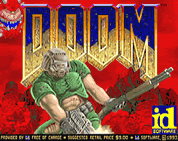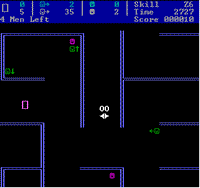 Developed by id Software in the early 90s and released in 1992, Wolfenstein 3D helped launch a genre that would influence generations of gamers and shape the modern world of video games – the first person shooter. Inspired by the Castle Wolfenstein series by Muse Software, the game was a smash success. It helped popularize the genre on PCs and heavily influenced gameplay for shooters.
Developed by id Software in the early 90s and released in 1992, Wolfenstein 3D helped launch a genre that would influence generations of gamers and shape the modern world of video games – the first person shooter. Inspired by the Castle Wolfenstein series by Muse Software, the game was a smash success. It helped popularize the genre on PCs and heavily influenced gameplay for shooters.
Begun in 1991 based on work by John Carmack, id pitched the game to Apogee Software founder Scott Miller, who agreed to fund a shareware title. That was followed up with a commercial release, proving the shareware model could be quite successful along the way.
The game also spawned a hobbyist community of players who created new levels and mod programs to further alter and add to the game. This ability would later be embraced by id who started including built in tools, which later became a staple in releases of Doom and Quake.
By the end of 1993, Wolfenstein sat at the top of the gaming heap on multiple platforms, having transformed an entire genre and influencing the entire industry. It is considered the grandfather of first person shooters, and gave rise to the enormous success of id Software.






